Winter Radish Gardening Tips: Unlock the secrets to a vibrant winter harvest! Have you ever dreamed of enjoying crisp, peppery radishes straight from your garden even when the snow is falling? It might sound like a fantasy, but with the right know-how, it’s absolutely achievable. For centuries, resourceful gardeners have extended their growing seasons using clever techniques, and growing winter radishes is a fantastic way to tap into that tradition.
I know what you’re thinking: “Radishes in winter? Isn’t that impossible?” But trust me, it’s not! In fact, winter radishes, like the Daikon or Black Spanish varieties, are specifically bred to thrive in cooler temperatures. They offer a satisfying crunch and a unique flavor profile that can brighten up any winter meal. Plus, imagine the satisfaction of harvesting fresh produce when everyone else is relying on the grocery store!
This DIY guide is your key to mastering winter radish gardening tips. We’ll walk you through everything from selecting the right varieties and preparing your soil to protecting your plants from frost and pests. Whether you’re a seasoned gardener or a complete beginner, these simple hacks will empower you to cultivate a thriving winter radish patch. So, grab your gloves, and let’s get growing!
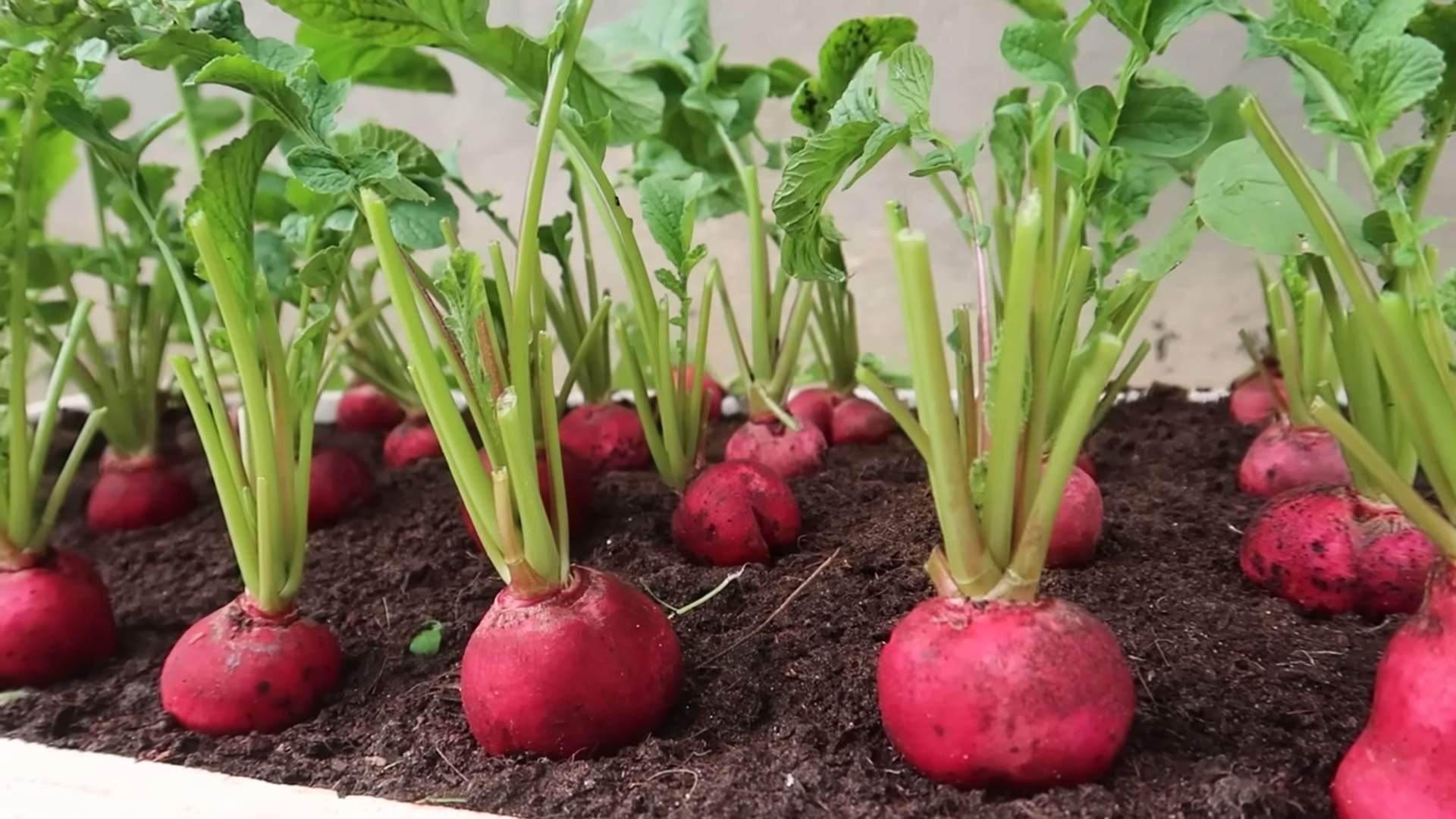
Growing Winter Radishes: A DIY Guide to a Bountiful Harvest
Okay, so you want to grow winter radishes? Awesome! They’re a fantastic addition to your garden, offering a spicy kick when most other veggies are snoozing. I’ve been growing them for years, and I’m excited to share my secrets to a successful harvest. This guide will walk you through everything, from choosing the right variety to storing your bounty. Let’s get started!
Choosing the Right Winter Radish Variety
First things first, you can’t just grab any radish seed and expect it to thrive in the colder months. Winter radishes are different from their spring cousins. They take longer to mature and are much larger. Here are a few of my favorite varieties:
* Daikon: This is probably the most well-known winter radish. They’re long, white, and have a mild, slightly sweet flavor. Perfect for salads, stir-fries, and pickling.
* Black Spanish Round: Don’t let the name scare you! These radishes have a tough, black skin, but the flesh inside is crisp and white with a pungent, peppery flavor. They store incredibly well.
* China Rose: These are beautiful radishes with pink skin and a mild, slightly sweet flavor. They’re great for adding color to your salads.
* Watermelon Radish: Another visually stunning variety! The outside is pale green, but the inside is a vibrant pink, resembling a watermelon. They have a mild, slightly sweet flavor with a hint of pepper.
Preparing Your Garden Bed
Winter radishes need well-drained soil that’s rich in organic matter. I always amend my soil before planting to give them the best start.
1. Clear the Area: Remove any weeds, rocks, or debris from your garden bed. You want a clean slate to work with.
2. Amend the Soil: This is crucial! I like to add a generous amount of compost or well-rotted manure to my soil. This will improve drainage, add nutrients, and help retain moisture. Spread a 2-3 inch layer of compost over the bed.
3. Till the Soil: Use a garden fork or tiller to incorporate the compost into the soil. Aim for a depth of at least 12 inches, as winter radishes need room to grow downwards.
4. Smooth the Surface: Rake the soil to create a smooth, even surface. This will make planting easier and ensure good seed-to-soil contact.
5. Test the Soil (Optional): If you’re unsure about your soil’s pH, consider doing a soil test. Radishes prefer a slightly acidic to neutral pH (around 6.0 to 7.0). You can adjust the pH by adding lime (to raise it) or sulfur (to lower it).
Planting Your Winter Radish Seeds
Timing is key when planting winter radishes. You want to plant them late enough in the season so they mature in the cooler months, but early enough so they have time to develop before the first hard frost. I usually aim for late summer to early fall, depending on my local climate.
1. Check Your Local Frost Dates: This is super important! Find out the average date of your first hard frost. You’ll want to plant your radishes about 6-8 weeks before this date.
2. Create Rows: Use a hoe or trowel to create shallow rows in your prepared garden bed. Space the rows about 12-18 inches apart.
3. Sow the Seeds: Sow the radish seeds about ½ inch deep and 1-2 inches apart within the rows. Don’t overcrowd them! They need room to grow.
4. Cover the Seeds: Gently cover the seeds with soil and lightly pat it down.
5. Water Thoroughly: Water the bed thoroughly after planting. This will help the seeds germinate and establish roots.
Caring for Your Winter Radishes
Once your radishes are planted, it’s important to provide them with the right care to ensure a healthy and productive harvest.
1. Watering: Radishes need consistent moisture, especially during germination and early growth. Water deeply whenever the soil feels dry to the touch. Avoid overwatering, as this can lead to rot.
2. Thinning: Once the seedlings emerge, thin them to about 2-4 inches apart. This will give the remaining plants enough room to grow to their full size. Don’t just pull them out! Gently snip the unwanted seedlings at the soil line to avoid disturbing the roots of the remaining plants.
3. Weeding: Keep your garden bed free of weeds. Weeds compete with radishes for nutrients and water. Hand-pull weeds regularly, being careful not to disturb the radish roots.
4. Fertilizing (Optional): If your soil is poor, you can side-dress your radishes with a balanced fertilizer a few weeks after they emerge. Follow the instructions on the fertilizer package. I usually use a liquid seaweed fertilizer diluted in water.
5. Pest Control: Radishes are generally pest-resistant, but they can sometimes be bothered by flea beetles or aphids. Check your plants regularly for signs of infestation. If you find pests, you can try spraying them with insecticidal soap or neem oil. I prefer organic solutions whenever possible.
6. Mulching: Apply a layer of mulch around your radish plants. This will help retain moisture, suppress weeds, and regulate soil temperature. I like to use straw or shredded leaves.
Harvesting Your Winter Radishes
The best part! Winter radishes take longer to mature than spring radishes, typically 50-70 days.
1. Check Maturity Dates: Refer to the seed packet for the specific maturity date of your radish variety.
2. Test Harvest: Gently loosen the soil around a radish and pull it up. If it’s the size you want, it’s time to harvest!
3. Harvest Carefully: Pull the radishes straight up from the ground. Be careful not to break them.
4. Remove Tops and Roots: Cut off the tops of the radishes, leaving about an inch of stem. Also, trim off the root tails.
5. Wash and Dry: Wash the radishes thoroughly to remove any dirt. Pat them dry with a clean towel.
Storing Your Winter Radishes
Winter radishes are known for their excellent storage capabilities. With proper storage, they can last for several months.
1. Cool and Humid Environment: The key to storing winter radishes is to keep them cool and humid.
2. Remove Greens: Make sure you’ve removed the greens before storing, as they can draw moisture from the radishes and cause them to rot.
3. Storage Methods: Here are a few methods I’ve used successfully:
* Sand Storage: This is my favorite method. Layer radishes in a box or container filled with slightly damp sand. Make sure the radishes don’t touch each other. Store the box in a cool, dark place, like a root cellar or unheated garage.
* Refrigerator Storage: Wrap the radishes in a damp paper towel and place them in a plastic bag in the refrigerator. They should last for several weeks.
* Root Cellar: If you have a root cellar, you can store radishes directly on the floor or in bins. Make sure the humidity is high.
Troubleshooting Common Problems
Even with the best care, you might encounter a few problems when growing winter radishes. Here are some common issues and how to address them:
* Radishes are small and stunted: This could be due to overcrowding, poor soil, or lack of water. Thin your plants, amend the soil with compost, and water regularly.
* Radishes are cracked: This is often caused by inconsistent watering. Try to maintain even soil moisture.
* Radishes are woody or bitter: This can happen if they’re left in the ground too long or if they’re grown in hot weather. Harvest them promptly when they reach maturity.
* Pests are attacking my radishes: Identify the pest and use appropriate control measures, such as insecticidal soap or neem oil.
Enjoying Your Winter Radish Harvest
Now that you’ve harvested your winter radishes, it’s time to enjoy them! They can be eaten raw, cooked, or pickled. Here are a few of my favorite ways to use them:
* Salads: Thinly sliced radishes add a spicy crunch to salads.
* Stir-fries: Daikon radishes are great in stir-fries.
* Pickling: Pickled radishes are a delicious and tangy condiment.
* Roasting: Roasted radishes become sweet and tender.
* Soups and Stews: Add diced radishes to soups and stews for a flavorful boost.
* Radish Greens: Don
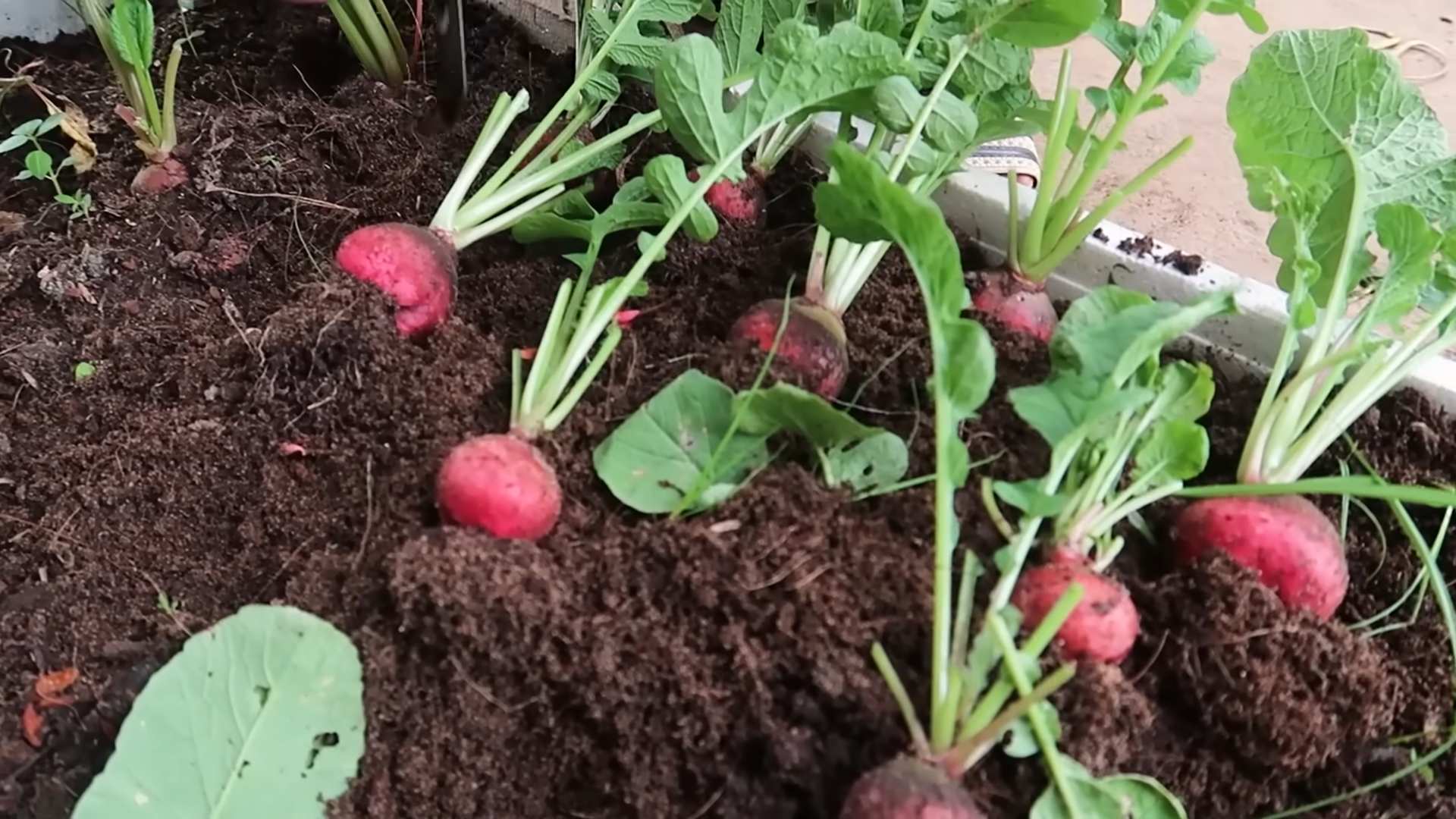
Conclusion
So, there you have it! Mastering the art of winter radish gardening is not only achievable but also incredibly rewarding. We’ve explored the key steps, from selecting the right varieties to providing adequate protection against the harsh winter elements. But why is this DIY trick a must-try? Because it unlocks a world of fresh, crisp, and peppery radishes right when you need them most – during the cold winter months when other garden delights are scarce. Imagine adding a vibrant crunch to your winter salads, a spicy kick to your soups, or simply enjoying the satisfaction of harvesting your own homegrown produce in the dead of winter.
This isn’t just about growing radishes; it’s about extending your gardening season, connecting with nature year-round, and enjoying the unparalleled flavor of freshly harvested vegetables. The DIY aspect empowers you to take control of your food source, reduce your reliance on store-bought produce, and potentially save money in the long run. Plus, the process itself is incredibly therapeutic and fulfilling.
Looking for variations? Consider experimenting with different radish varieties suited for winter growing. ‘Black Spanish Round’ offers a pungent bite, while ‘French Breakfast’ provides a milder, more delicate flavor. You can also try companion planting with spinach or lettuce to maximize space and create a mutually beneficial growing environment. Another variation is to use cold frames or row covers for enhanced protection against extreme cold, especially in regions with harsh winters. You can even try succession planting, sowing seeds every few weeks to ensure a continuous harvest throughout the winter.
Don’t be intimidated by the prospect of winter gardening. With a little planning, preparation, and the right techniques, you can successfully grow delicious radishes even in the coldest months. The key is to start with good quality seeds, provide adequate sunlight and drainage, and protect your plants from frost and pests.
We wholeheartedly encourage you to give this DIY trick a try. Embrace the challenge, experiment with different techniques, and discover the joy of winter radish gardening. The rewards are well worth the effort. And most importantly, we want to hear about your experience! Share your successes, your challenges, and your tips with us in the comments below. Let’s build a community of winter radish enthusiasts and learn from each other. Your insights could inspire others to embark on their own winter gardening journey. So, grab your seeds, prepare your soil, and get ready to enjoy the taste of fresh, homegrown radishes all winter long! Let us know how your **winter radish gardening** goes!
Frequently Asked Questions (FAQ)
What are the best radish varieties to grow in winter?
The best radish varieties for winter growing are those that are cold-hardy and mature quickly. Some excellent choices include:
* ‘Black Spanish Round’: Known for its pungent flavor and excellent storage capabilities.
* ‘French Breakfast’: A milder, more delicate radish with a distinctive elongated shape.
* ‘Cherry Belle’: A classic, round red radish that is easy to grow and matures quickly.
* ‘Sparkler’: Another quick-maturing variety with a mild flavor and attractive red and white coloring.
* ‘Daikon’: While technically a winter radish, Daikon varieties can be grown for a longer period and offer a milder flavor than some of the spicier options.
Consider your local climate and growing conditions when selecting your varieties. Check seed packets for specific information on cold hardiness and maturity times.
How much sunlight do winter radishes need?
Radishes need at least 6 hours of direct sunlight per day to thrive. In winter, sunlight is often less intense, so it’s crucial to choose a location that receives maximum sunlight exposure. If you’re growing radishes indoors or in a greenhouse, you may need to supplement with grow lights to ensure they receive enough light. Rotate your plants regularly to ensure even light exposure.
What type of soil is best for winter radishes?
Radishes prefer well-drained, loose soil that is rich in organic matter. Amend your soil with compost or well-rotted manure before planting to improve drainage and fertility. Avoid heavy clay soils, as they can become waterlogged and inhibit root growth. A soil pH of 6.0 to 7.0 is ideal for radish growth.
How often should I water my winter radishes?
Water radishes regularly, especially during dry periods. Keep the soil consistently moist but not waterlogged. Overwatering can lead to root rot, while underwatering can cause the radishes to become tough and bitter. Check the soil moisture regularly and water when the top inch feels dry to the touch.
How can I protect my winter radishes from frost?
Frost can damage or kill radish plants, so it’s essential to provide adequate protection during cold weather. Here are some effective methods:
* Cold frames: These provide a sheltered environment for your radishes, trapping heat and protecting them from frost.
* Row covers: Lightweight fabric covers that can be placed over your plants to provide insulation.
* Mulch: Applying a thick layer of mulch around your plants can help insulate the soil and protect the roots from freezing.
* Move indoors: If you’re growing radishes in containers, you can move them indoors to a protected location during periods of extreme cold.
How long does it take for winter radishes to mature?
Radishes are known for their quick maturity, with most varieties ready to harvest in 20 to 30 days. However, winter radishes may take slightly longer to mature due to the cooler temperatures and shorter days. Check the seed packet for specific maturity times for your chosen varieties.
How do I know when my winter radishes are ready to harvest?
Radishes are ready to harvest when they reach the desired size, typically about 1 inch in diameter. Gently loosen the soil around the radish and pull it out of the ground. If the radish is too small, leave it in the ground for a few more days. Harvest radishes promptly once they are mature, as they can become tough and bitter if left in the ground for too long.
Can I grow radishes in containers during the winter?
Yes, radishes are well-suited for container gardening, making them a great option for winter growing. Choose a container that is at least 6 inches deep and has drainage holes. Use a well-draining potting mix and follow the same planting and care instructions as for growing radishes in the ground.
What are some common pests and diseases that affect winter radishes?
Radishes are generally pest-resistant, but they can be susceptible to certain pests and diseases, including:
* Flea beetles: These small, jumping beetles can damage radish leaves.
* Root maggots: These larvae feed on radish roots, causing them to become stunted and deformed.
* Downy mildew: A fungal disease that can cause yellow spots on radish leaves.
To prevent pests and diseases, practice good garden hygiene, such as removing weeds and debris, and rotate your crops regularly. Use organic pest control methods, such as insecticidal soap or neem oil, to control pests.
How do I store winter radishes after harvesting?
To store radishes, remove the greens and wash the radishes thoroughly. Place them in a plastic bag or container with a damp paper towel and store them in the refrigerator. Radishes can typically be stored for up to two weeks.

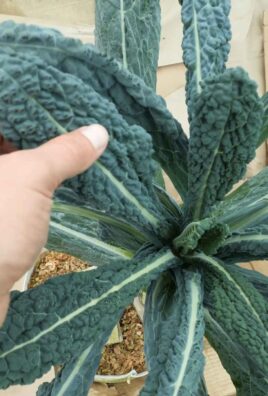
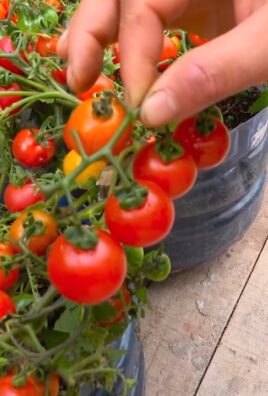
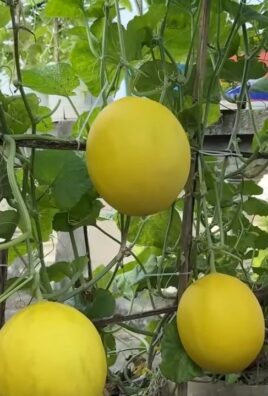
Leave a Comment